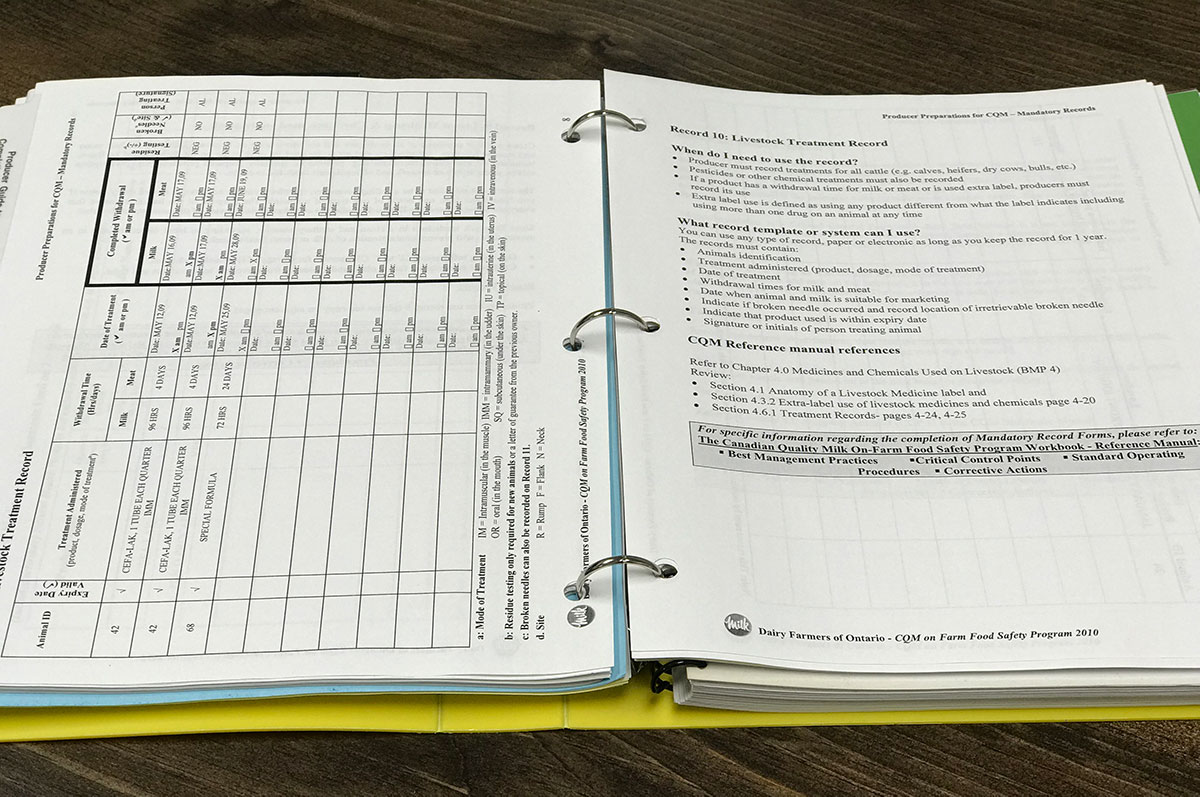Section 2 | Responsibility
Page 06 /
Livestock Treatment Protocols and Records
Treatment Protocols
Another important area where working with a veterinarian can help with Responsibility is in developing and maintaining excellent treatment protocols and records.
Farms should have SOPs in place to correctly identify (e.g. routine pen or herd check SOPs) and assess (e.g. physical examination SOPs) sick animals in a timely and efficient manner. At the same time, farmers should work with their herd/flock veterinarian to develop treatment protocols for the most common conditions on their operation.

Treatment protocols contain information on:
- An overview of the cause of the condition
- Physical signs (e.g. body temperature, respiratory rate, mentation) with the given condition
- Instructions on the appropriate course of treatment to take, including:
- The correct drug
- The appropriate duration of treatment
- The required withdrawal time(s)
- Directions to take upon treatment failure:
- Secondary treatments
- When to contact a veterinarian
In order to ensure appropriate antimicrobial use, all treatment protocols should be based on the best available science and applied exactly as outlined.
The herd/flock veterinarian is an expert in animal health and needs to be involved in responsible antimicrobial use decisions on the operation. Veterinarians need to assist in the development of treatment protocols for all disease conditions that the farmer feels comfortable identifying and treating on their farm
Treatment Records
Creating and maintaining accurate treatment records will go a long way to supporting responsible antimicrobial use on farm operations. Treatment records could range from as simple as handwritten notes in a binder, to information recorded within specialized herd/flock management software.
The important parts that should be included in all treatment records include:
- Unique animal/group identifiers
- Stage of production
- Date and time treatments were administered
- Drug used
- Dose used (amount of drug), duration of therapy, and method of administration
- The day that the animal or its products can be safely marketed (i.e. past their drug withdrawal time)
- Treatment outcomes (i.e. was treatment successful?)
- Identification of the person(s) administering the treatment
- Space for additional comments

Source: ACER Consulting Ltd.
Some important benefits of ensuring accurate treatment records for your herd/flock:
Accountability
- Farmers take responsibility for all of the drugs that are used in their animals
- If someone were to ask, farmers can account for and justify every dose of medicine used in their animals
Residue avoidance
- Memory is not an accurate recording system!
- Accurate records minimize the chances of violative drug residues, it:
- Helps with calculation of withdrawal times
- Ensures the same animal will not be inappropriately treated
- Good records prevent inappropriately treating an animal twice in the same day because the original treatment was not accurately recorded
Outcomes analysis
- With good records, farmers and veterinarians can periodically review how well treatments are working in the herd/flock
Enables benchmarking and goal-setting over time and against industry standards
- Knowing where a farm stands on medicines use enables setting of realistic and targeted goals for improvement
